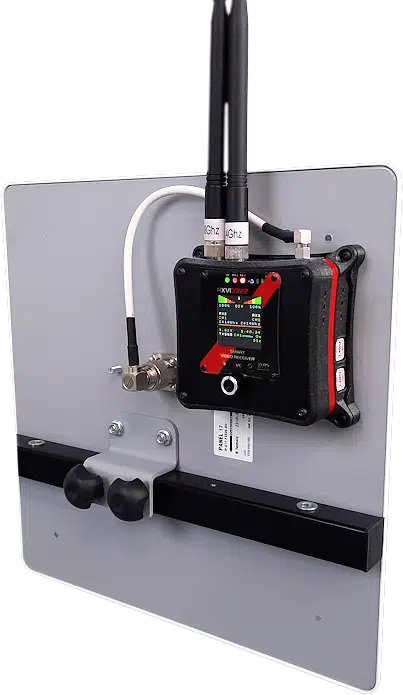Why do we use two Data Links?
For me, the radio link should be like an unbreakable umbilical cord.
I have flown hundreds of hours with the XLRS system without autopilot years ago when they were not commonly used and I have always felt safe in that regard.
During the flight, it continually checked RF coverage and noise, to know when not to continue or to predict a link loss long before it occurred.
When you fly a lot, it is normal for “good” things to happen to you, such as breaking antennas in flight, passing near the beam of a powerful analog TV repeater, flying near a jammer, etc.
With the first LRS systems, when it passed 3Km from the TV repeater beam, the RF intensity was such that it left my receiver “blind” and the plane went into a spin until it left the beam.
This bothered me a lot because it was about 6 km away and I didn’t feel like looking for the plane in case of a total loss.
 Later, in the following weeks, we filtered the receiver until we were able to fly around the repeater at 50 meters and no longer have problems, although some servos would get a little blocked by the RF from time to time.My habit then was to keep the radio control and video power separate.
Later, in the following weeks, we filtered the receiver until we were able to fly around the repeater at 50 meters and no longer have problems, although some servos would get a little blocked by the RF from time to time.My habit then was to keep the radio control and video power separate.
When do you need video on your system?
In systems that need video, with the XLRS system we normally use a Data Link for Radio control / Telemetry and another for video.
 Of course you can use a single Data Link for everything, but at DMD we like to ensure the radio control and telemetry signal as much as possible, since we make these radio links in lower bands such as 434, 868, 902 or 950Mhz, achieving ranges of up to 250Km or more with only 1W of power and 100kb radio modulations.
Of course you can use a single Data Link for everything, but at DMD we like to ensure the radio control and telemetry signal as much as possible, since we make these radio links in lower bands such as 434, 868, 902 or 950Mhz, achieving ranges of up to 250Km or more with only 1W of power and 100kb radio modulations.
This gives a lot of security to control the vehicle and with telemetry to know its status, in almost any circumstance.
In the image you can see the XVRE long range digital video receiver, mounted on SATPRO.
In the following image you can see the Data Link WMX481 with a 434Mhz yagi antenna and in the background the parabolic antenna for the XVRE video receiver.

Video systems
As video systems use higher frequencies, normally 2.4 and 5.8Ghz with modulations of up to 6Mb, the range is smaller and the link is more critical in general, rain, clouds and other causes can reduce the range by half or more.
In the case of analog video at 2.4Ghz with 1W it reaches up to 100Km with a 24dBi dish.

With Full HD digital video up to 150Km but with 8W of power and high gain antennas, 24dBi or more.
To achieve these distances in video with high gain antennas, it is necessary to use an antenna tracker such as SATPRO to aim automatically, with more precision. Manual aiming is not a good option for these distances.
Line of Sight links
We have referred to LOS or Line of Sight links and maximum ranges.
As for the working range, it is usually smaller and we usually calculate it as approximately half of the maximum scope.
 To extend the working range and further secure the radio link, redundant links can be made, but I will talk about this in another article.
To extend the working range and further secure the radio link, redundant links can be made, but I will talk about this in another article.
Summary:
When there is only one Data Link for everything, the loss of video also means the general loss of radio control and telemetry data and very likely aborting the mission by activating the return to home.
In cases with double datalink it is likely to have problems with the video before losing control.
Then we can still control the vehicle by having the independent radio control and telemetry data link that reaches almost double.
 Custom solutions
Custom solutions
Are you looking for a personalized solution in remote control, radio control, base stations or antenna tracking systems? At DMD we are ready to help you design and develop the system that perfectly suits your needs. Contact us for more information or request a quote through our email: sales@dmd.es.
We are here to help you!. More info…












 Custom solutions
Custom solutions










Leave a reply
You must be logged in to post a comment.